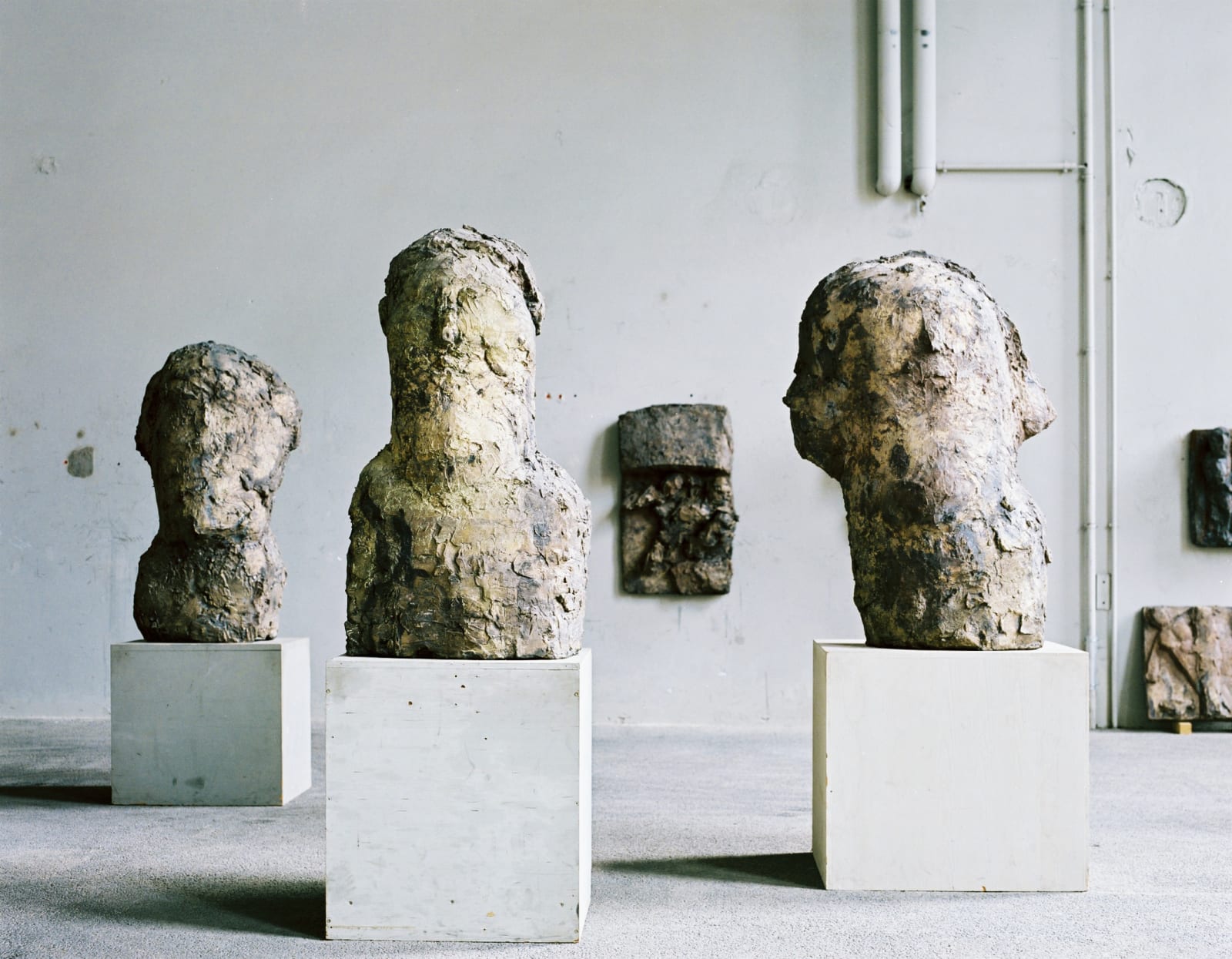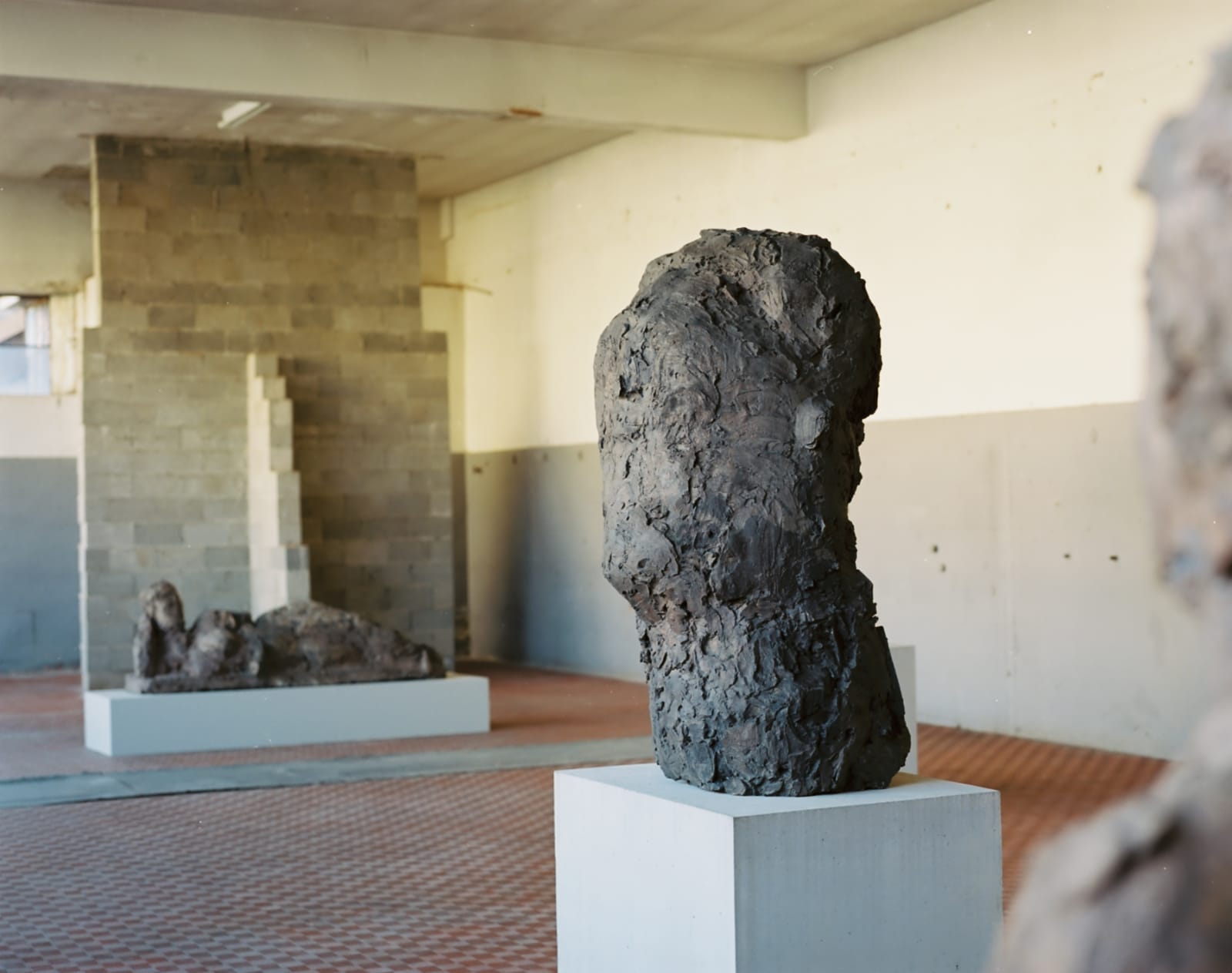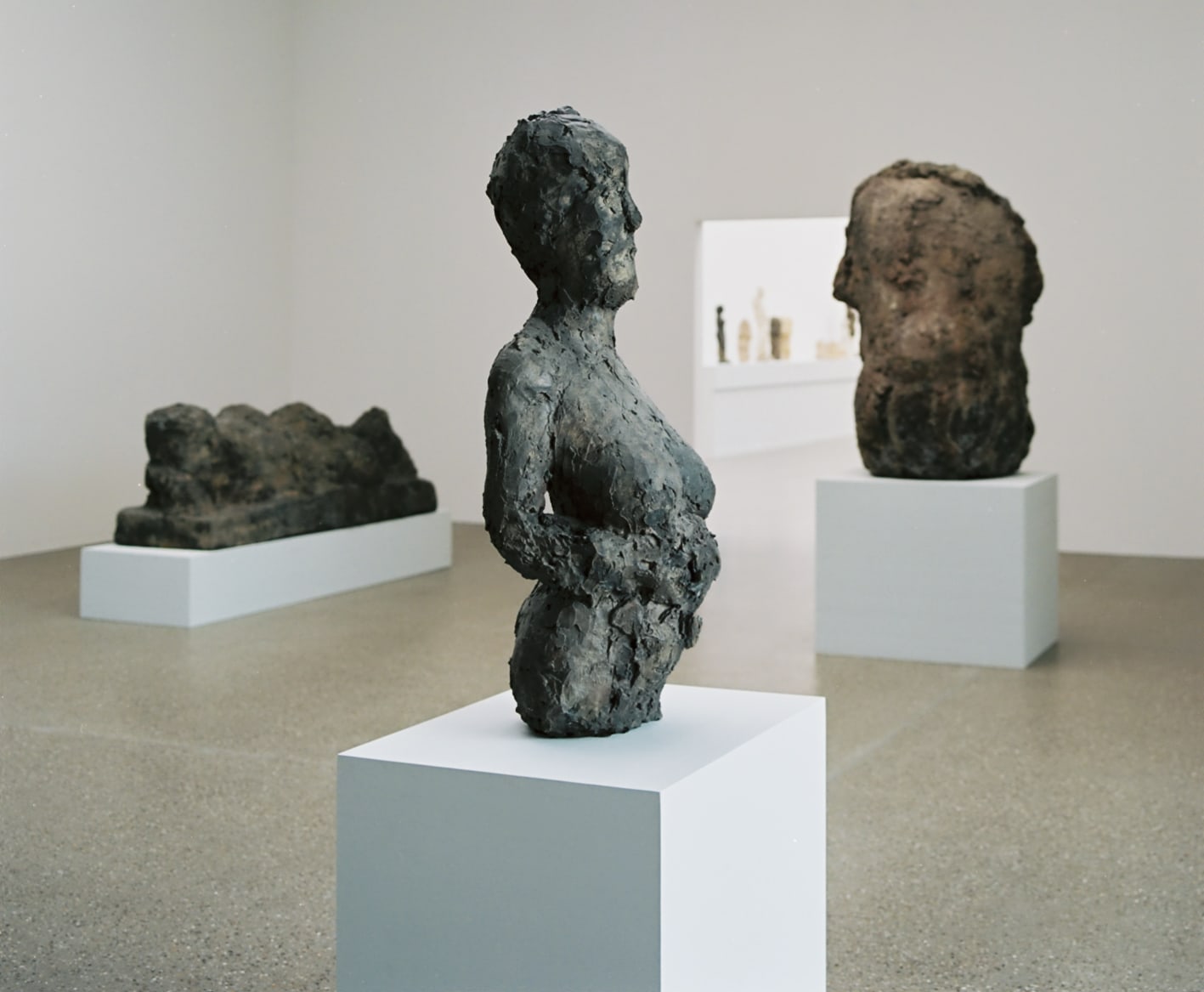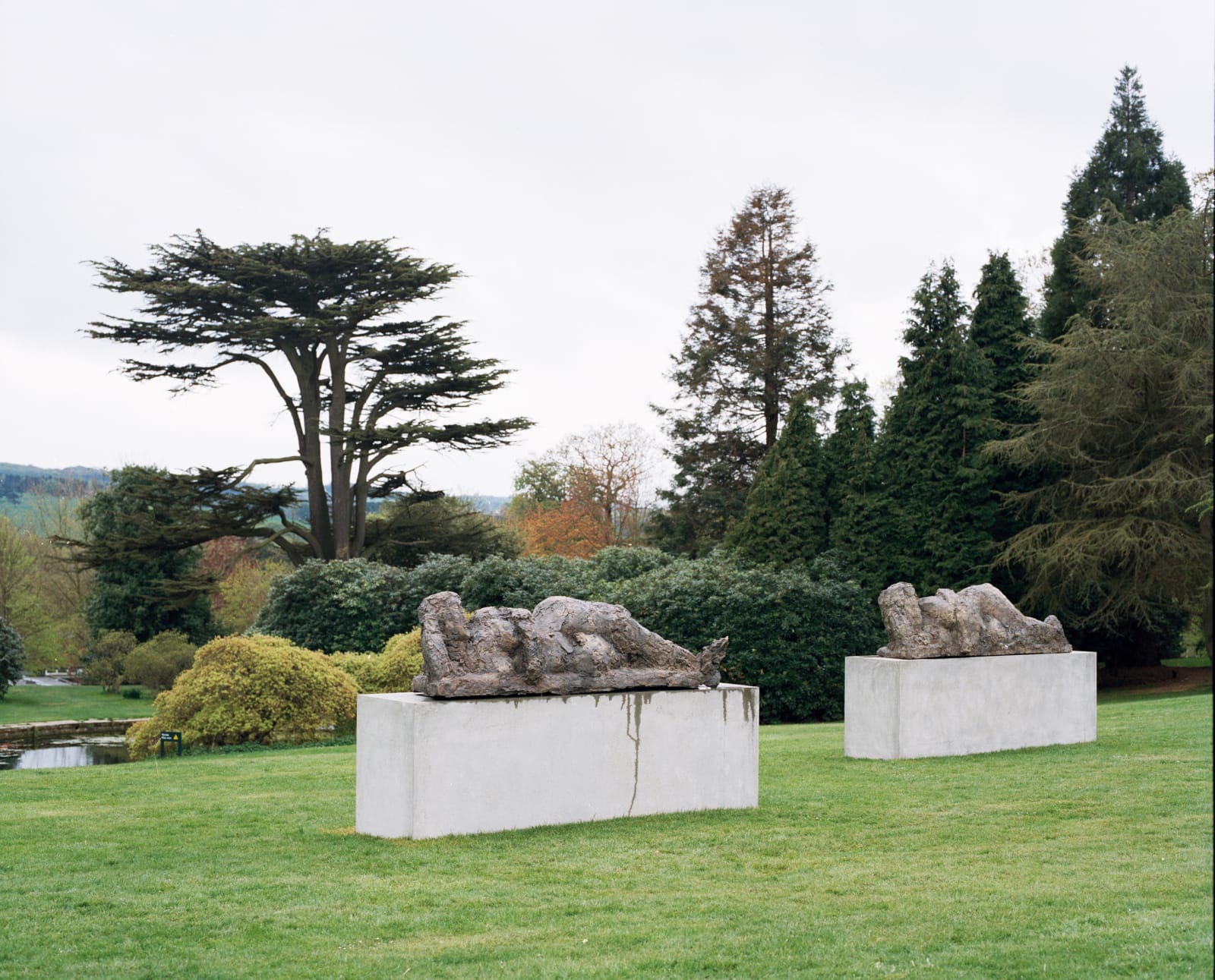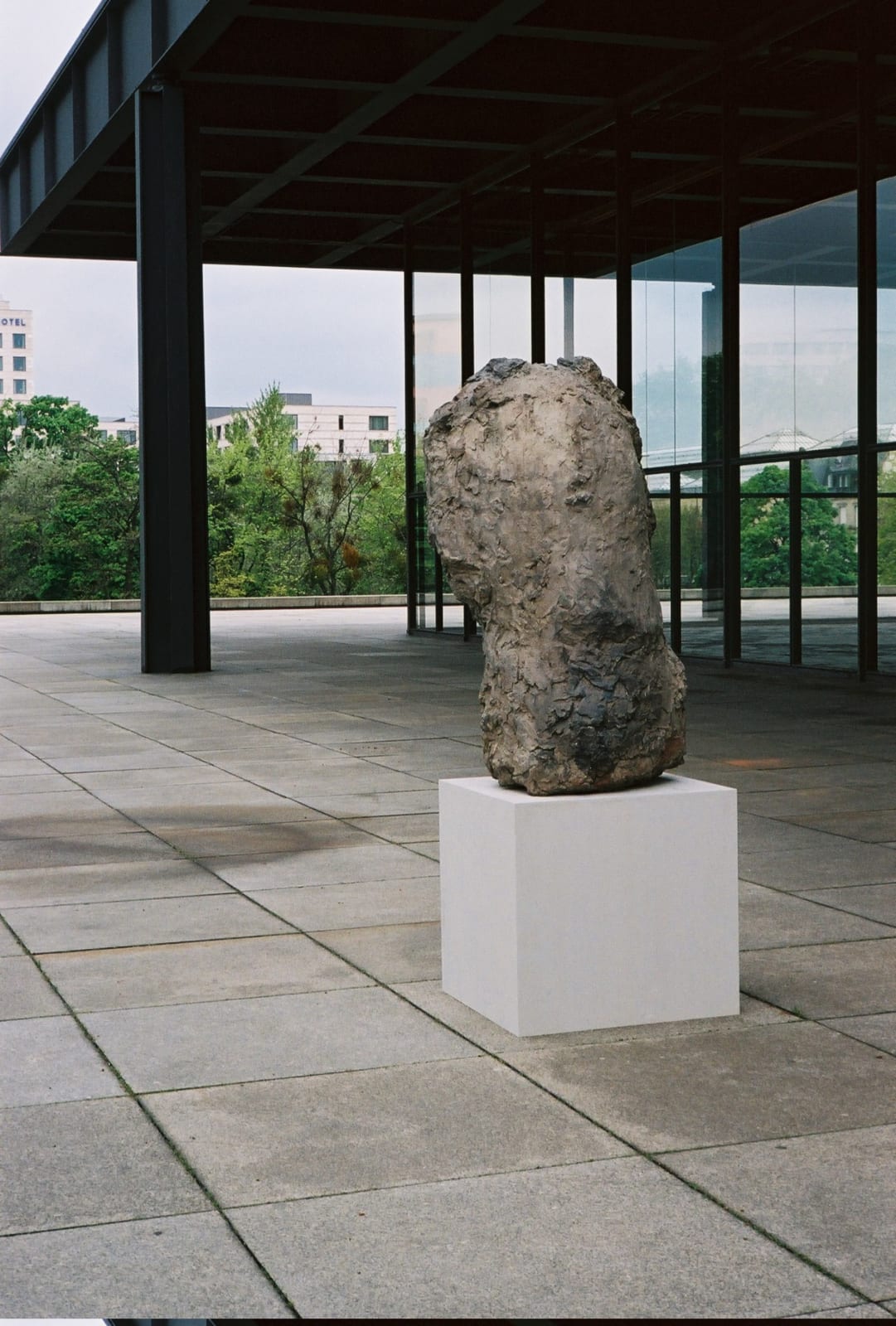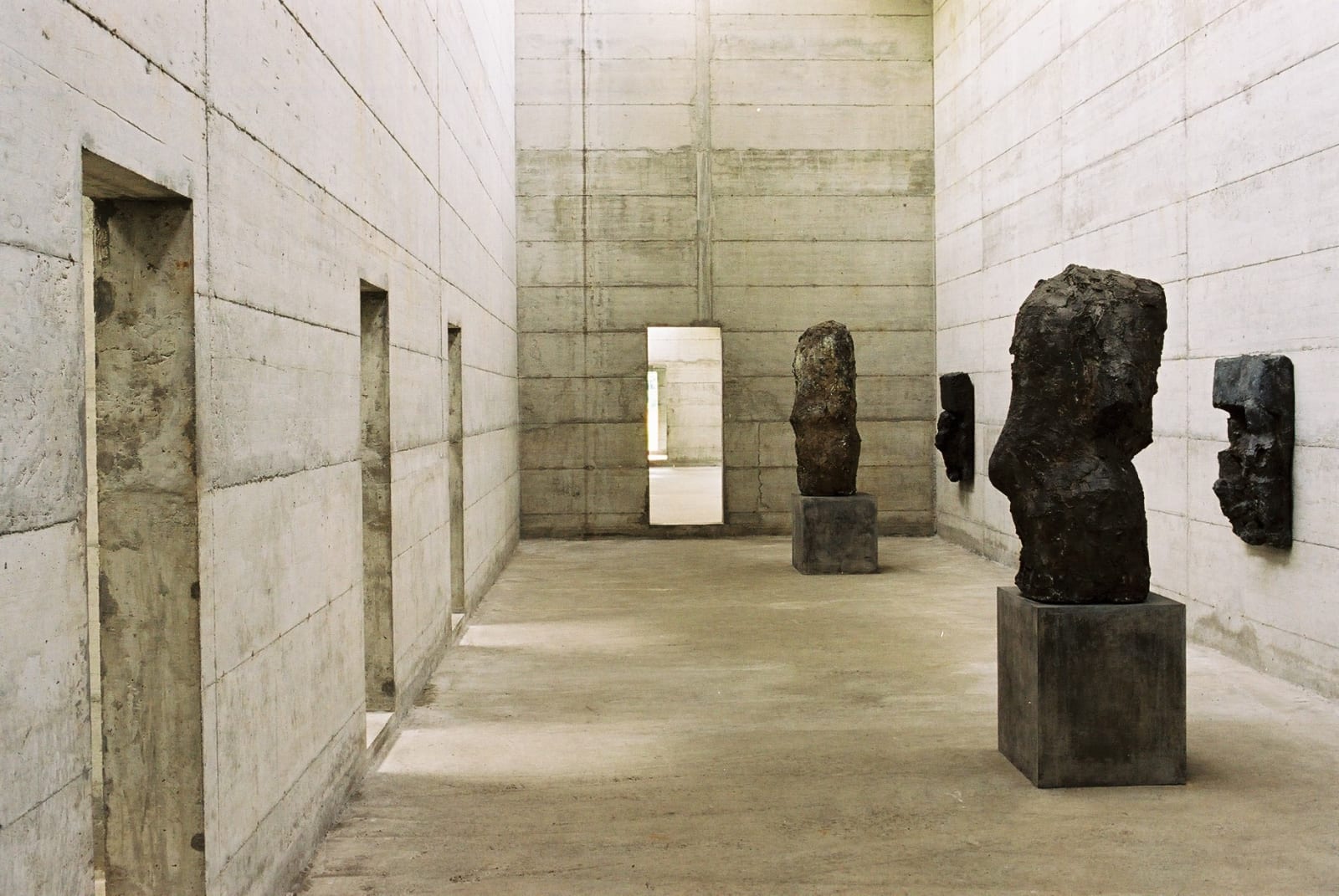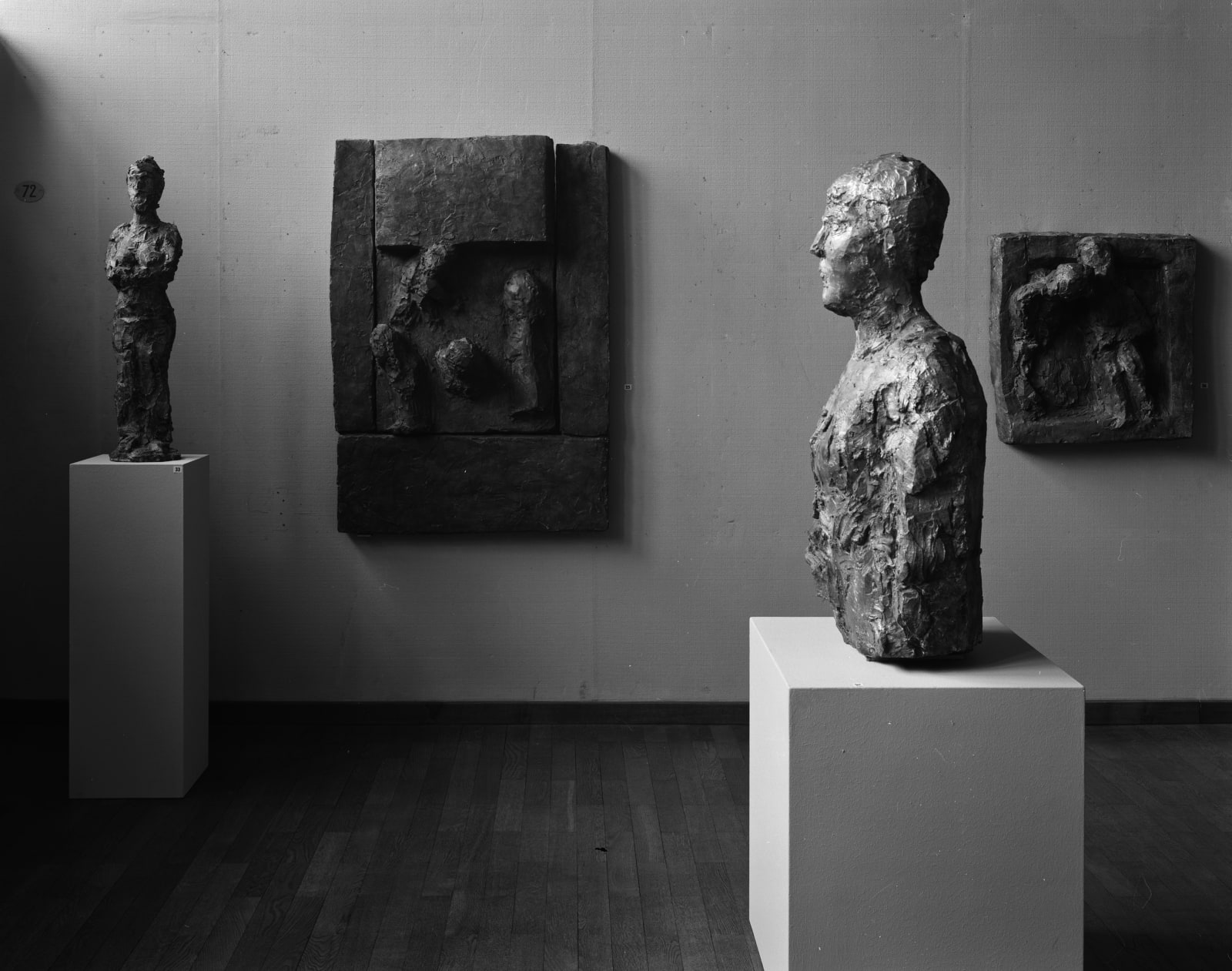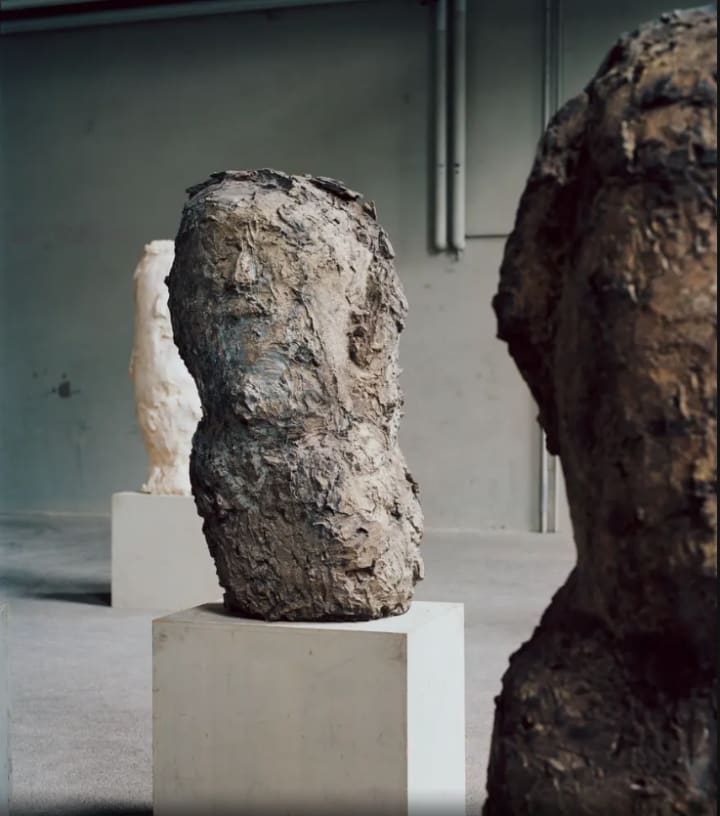

Hans Josephsohn Estate
Overview
My sculptures are not about life in general but rather they lead their own lives. — Hans Josephsohn
The sculptural practice of Hans Josephsohn is characterised by his lifelong preoccupation with the human form. Over the course of six decades, the Swiss artist developed a wholly unique visual language that defies categorisation and has been impactful both on his contemporaries and the following generation of artists. Standing, sitting, and recumbent in full- or half-figures and reliefs, Josephsohn created tender images of human beings. His depictions of the body range from the more directly figurative, stele-like sculptures of his early years to the abstracted volumes he created from the 1980s onwards, culminating in late half-length figures that only subtly allude to the body with their totemic forms.
Pushing the boundaries of figurative representation and its perception in sculpture, Josephsohn’s works are defined by a powerful corporeality, placing emphasis on the very substance of the human form. Crafted from plaster and cast in brass or bronze, his sculptures are raw and tactile, with roughly finished, haptic surfaces that resound with a timeless quality. Often traces of the artist's fingermarks are visibly embedded in the works, testaments to the unmediated working process between his hands and the material of the forms he sculptured. Balancing careful precision with expressive treatment, the powerfully textured surfaces imbue his works with a sense of exuberance and humanity, capturing the essence of the lived body. His artistic exploration of human existence stems from his contemplation of his own experiences, predominantly shaped by his daily work in the studio and the human interactions enacted within his personal sphere. ‘The starting point is simply us,’ the artist has stated. Transcending mere representation, his approach to representing the body can thus be understood as deeply personal explorations of the human condition.
Hans Josephsohn was born into a Jewish family in what was formerly Königsberg, East Prussia, in 1920. He briefly attended art school in Florence before relocating to Switzerland in 1938, where he continued to live and work until his death in 2012. He studied sculpture under Otto Müller and established his own studio in 1943, where he continued to work for the rest of his life. His work has been shown in numerous solo exhibitions in Switzerland since 1956, and he has garnered international acclaim since the early 2000s. Josephsohn’s work was shown alongside Alberto Giacometti’s at the 2012 Venice Biennale of Architecture. Recently, Josephsohn’s work has been on view at the Museum Folkwang, Essen (2018); Yorkshire Sculpture Park, Wakefield (2013); MMK Museum für Moderne Kunst, Frankfurt (2008); and the Stedelijk Museum, Amsterdam (2002). A retrospective of the artist’s work, curated by Albert Oehlen, was held in 2024–25 at the Musée d’Art Moderne de Paris.
Photo: Katalin Deér, Kesselhaus Josephsohn
Videos

August 2006




